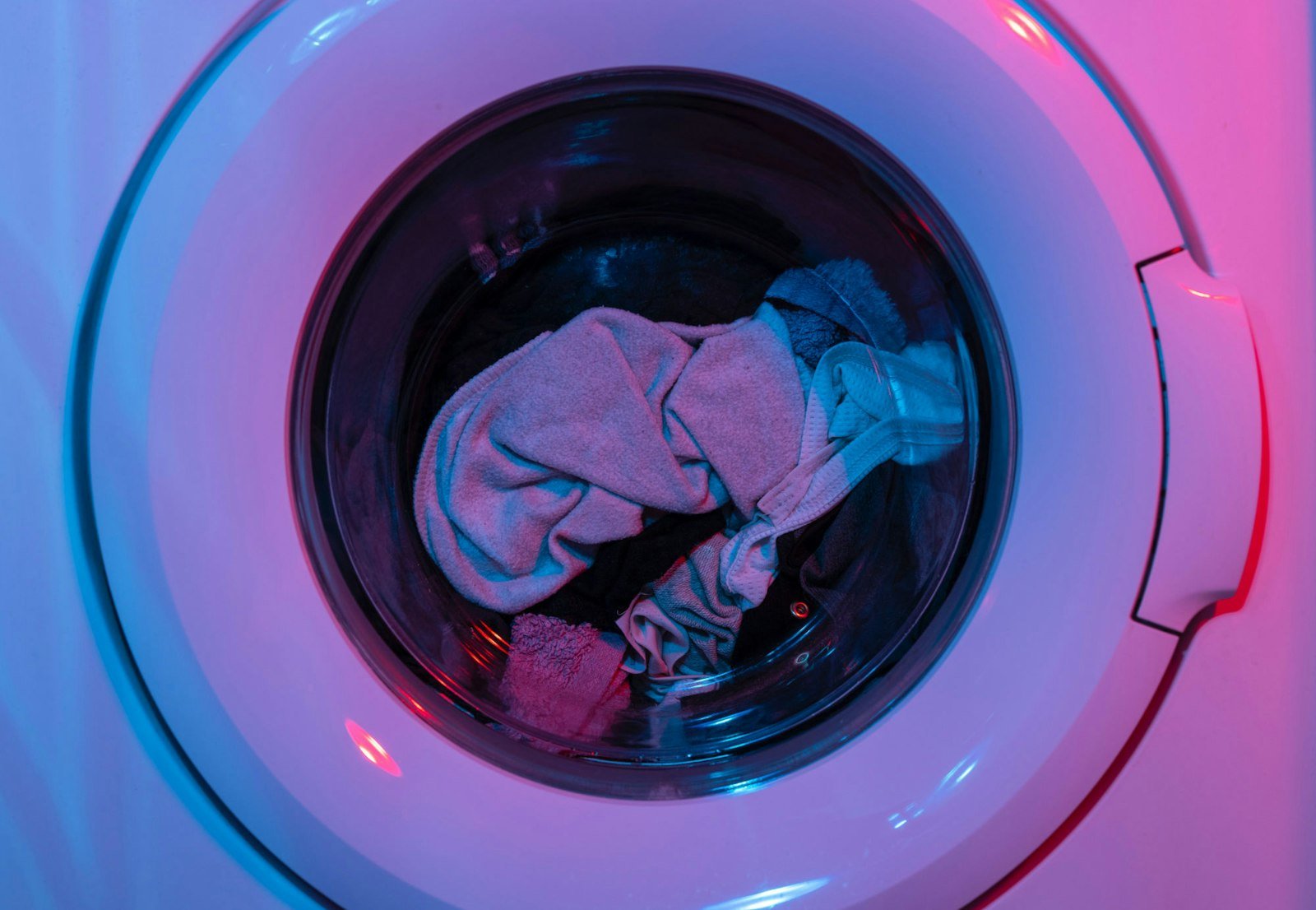Recently we switched Baby E to cloth diapers. While I’m not planning to weave cloth diapers or diaper covers any time soon (although we do have a project for that in the March/April 2012 issue), in my research on how to care for the diapers, I learned some information helpful to all of us who regularly wash handwovens and other delicate cloth. More specifically, I learned a bit more about fabric softener, detergent, and vinegar.
The first rule of cloth diapers is to never, ever use fabric softener. Why? Fabric softeners work by depositing a substance into the cloth to soften and reduce static cling. The problem is that substance deposited in the cloth stays in the cloth. Fabric softener can build up and prevent absorption, which is bad for not only cloth diapers, but also for towels, napkins, workout clothing, and any other type of fabric made to wick or absorb moisture.
If you want to keep your handwoven towels extra-thirsty, never wash them in fabric softener. Personally, I’d also skip washing scarves or any cold-weather fabrics in softener because I like that my scarves wick moisture off my neck and face and, therefore, keep me warmer longer. Fabric softeners can also cause white fabrics to yellow over time with buildup. If you have extra-special white handwoven napkins or table linens you’d like to keep bright white without the use of bleach (which can damage the fibers), skip the softener.
The next rule is to keep detergent within recommended amounts, which for a high efficiency (HE) washer might be a lot less than you’d imagine. Washing machines cannot tell how much detergent we’ve used in a load. Unless you add extra rinses, the washing machine will rinse the load based on weight (if you use a HE washer) or based on the cycle chosen (both HE and non-HE washers). If you add more detergent than can be rinsed out during the rinse cycle, you’ll end up with detergent buildup in your cloth. This can cause staining, bad smells, and reduced absorbency. It can also make your cloth feel slimy or stiff. Imagine covering your hands in dish soap—and then not rinsing it all off. Yuck, right?
Make sure to read both your washer manual and the detergent package to confirm that you’re using the amount of detergent required for your machine type and load size—for HE washers this is often as little as 2 tablespoons. The same can be said if you’re handwashing your handwoven cloth. Make sure to use an appropriate amount of detergent, whatever kind you use, and to rinse out your cloth thoroughly. (The exception is, of course, no-rinse wool washes because these are specially formulated.)
If you’re wondering whether your cloth has an excess of detergent buildup and you happen to have a front-loading washer, put the cloth in and set it to rinse and spin only, with no added detergent. An excess of bubbles during a rinse cycle can be a clear indicator that detergent residue is still a problem either in the cloth or in your washing machine drum.

Bubbles are fun in the bathtub but can be a sign of detergent buildup if you see them in your washing machine. Photo credt: Cristian Palmer on Unsplash
Finally, I learned that vinegar is a double-edged sword. Vinegar, specifically white distilled vinegar at 5–6 percent acidity, is excellent at getting detergent residue out of clothing. It reacts with the alkaline detergent to render both the vinegar and detergent inactive so both rinse out of the cloth easily. As an added benefit, when vinegar strips out the laundry detergent residue, it can leave the cloth softer and more absorbent. Vinegar is also great at getting rid of mildew, removing stains, making clothes look brighter, and reducing static cling.
What makes this a double-edged sword? First, if you add vinegar as a wash-aid or dump it in with the clothing before you start the washer you’ll end up washing your clothes in what’s essentially salt water. The same reaction that makes vinegar great at stripping detergent buildup out of your clothing will inactivate the detergent you want to use to wash your clothing. Vinegar is also acidic, so it can damage your cloth if you apply it directly or don’t dilute it properly/rinse it out quickly enough. You don’t need to add vinegar every time you wash and, much like with detergent, more isn’t necessarily better. Most resources recommend ¼ to ½ cup of vinegar added during the rinse cycle.
As always, err on the side of caution when dealing with delicate handwovens, follow washing instructions given with the cloth or use instructions from a reputable source, and read your washing-machine manual AND the container of anything you’re adding to your wash. Whether you’re washing a load of cloth diapers or your favorite overshot twill towels, using the right chemicals in the right amounts will keep them cleaner, brighter, and more absorbent for much, much longer.
Happy Weaving (and Washing!),
Christina

